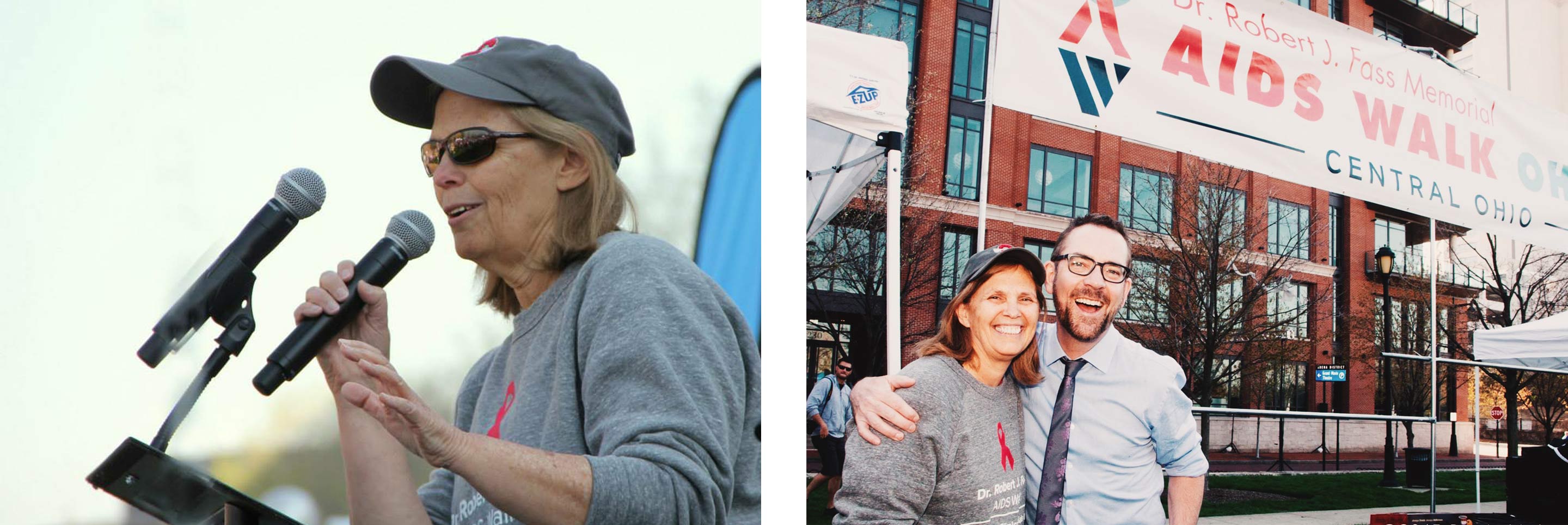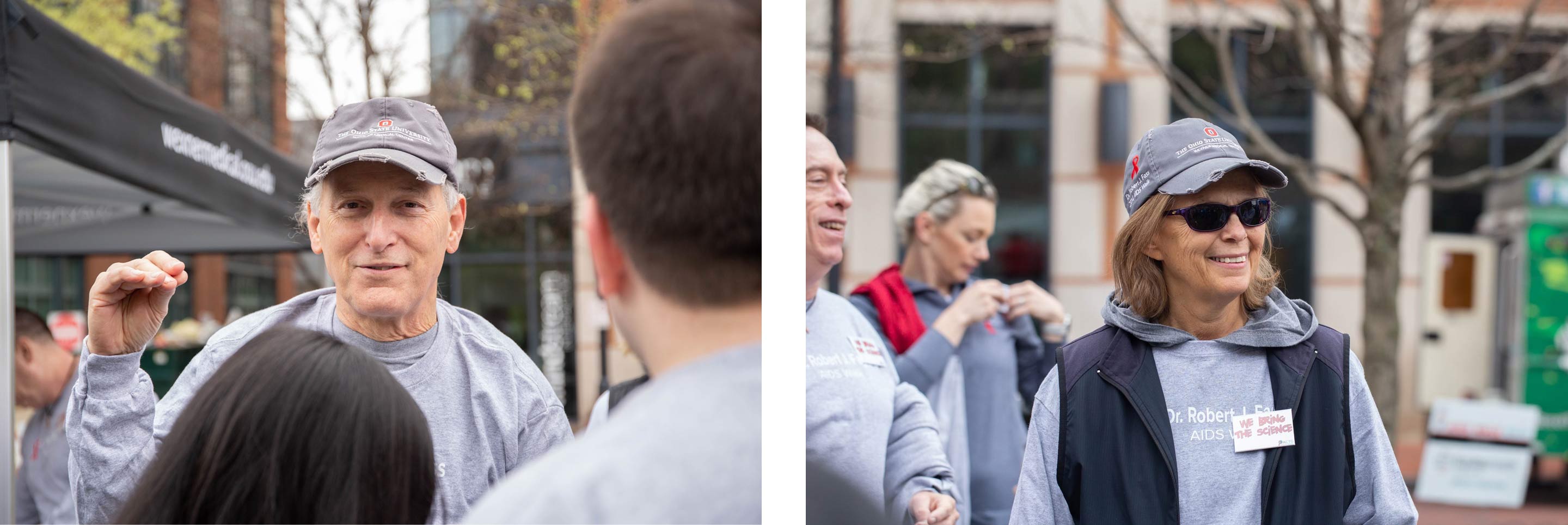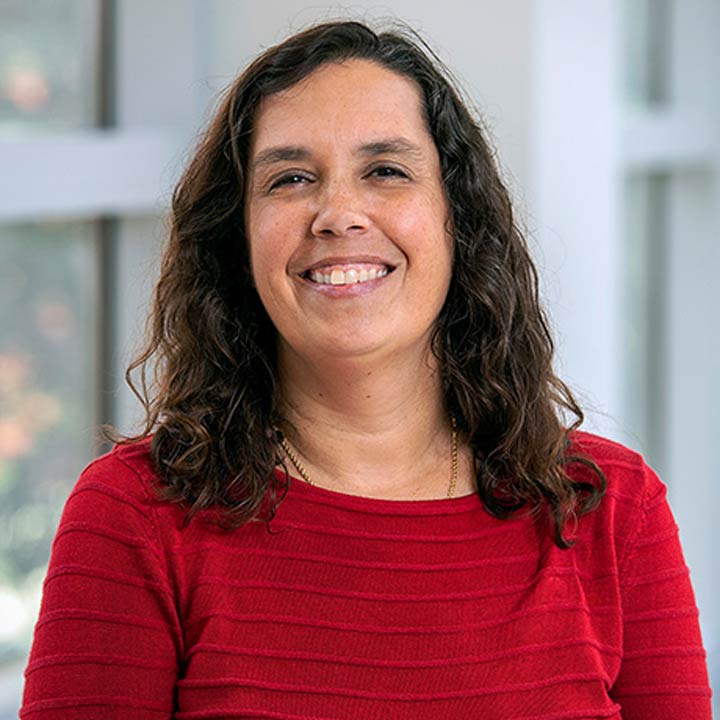From the forefront to 40 years later, reflecting on the HIV/AIDS crisis
Ohio State doctors share lessons learned from the HIV/AIDS pandemic and how they shaped COVID-19 care.
The irony isn’t lost on Michael Para, MD. After caring for cancer patients during his fellowship in the late 1970s, he didn’t think he could emotionally handle being around dying patients. He decided to switch from oncology to infectious diseases instead. In May of 1981, just before he started at The Ohio State University Wexner Medical Center, Para received a call from a friend who worked at the U.S. Centers for Disease Control and Prevention (CDC). It was a call that would ultimately reveal his destiny.
Looking back, Para reflects on that understatement and the timing of it all. The next month, the CDC released a report detailing the first stages of what the world would come to know as HIV/AIDS. Because he had spent three years studying viral infections, Para was quickly identified as an expert in the region. Ohio State hadn’t even seen its first AIDS patient — that wouldn’t happen until early 1983.
“This is what I was trained to do my whole life. It’s like the disease was made for me. I felt a responsibility to educate myself and others,” said Para.
“My friend said, ‘We’re seeing some strange cases of opportunistic infections in gay men and others,’” Para said. “I hadn’t heard of anything like that. Viral infections cause a little immune suppression but nothing like what he was talking about. His response was ‘Well, we may be hearing more about this.’”
In the early 1980s, Para traveled to every hospital within 100 miles of Ohio State, educating the medical community about HIV, or human immunodeficiency virus, which attacks the immune system and can lead to AIDS, or acquired immunodeficiency syndrome, if not treated. The virus initially puzzled researchers as to how it spread. Because it seemed to disproportionately affect young gay men, some called it the “gay cancer.” Homophobia, fear and misinformation reigned about the virus that later was revealed to not be airborne but transmitted through the exchange of bodily fluids such as blood, semen and vaginal fluids.
Gays and intravenous drug users became outcasts. Princess Diana made headlines around the world in 1987 for shaking the hand of a man dying of AIDS as she showed HIV wasn’t spread via touch. When 13-year-old Ryan White contracted HIV from blood transfusions to treat his hemophilia, he was kicked out of school and bullied. He became the posterchild for a virus that claimed his life at age 18 and today has killed 32 million people of all ages worldwide.
Para embraced his call, making himself available at all hours by sharing his home phone number with both patients and colleagues. When a priest and a gay man walked into his office to talk about creating a support system for those abandoned by their families, he endorsed what became the Columbus AIDS Task Force. He carried in food trays left out in the hallways by workers frightened early on by the virus and praised the nurses who set aside their fears and volunteered to take care of AIDS patients. He was signing so many death certificates that funeral directors went straight to his office so they could more quickly get the bodies out of their funeral homes.
“This was so much more than a fatal disease. It had societal implications, outing those who had been in the closet their entire lives and then were rejected by their families. To die is one thing, but to die alone is entirely different,” Para said, his voice trailing off.

Left image: Susan Koletar, MD, gives a speech at a Central Ohio AIDS Walk.
Right image: Susan Koletar, MD, and celebrity TV host, Ted Allen, at a Central Ohio AIDS Walk.
Things were going to get better
HIV was just starting to make its way into the Midwest when Susan Koletar, MD, started her infectious diseases fellowship at the Ohio State Wexner Medical Center in July 1986. She can vividly remember her first HIV patient, who suffered from a little-known brain infection. She connected with another patient who was a voracious reader and going blind.
Koletar found herself acting as both physician and counselor, holding the hands of those left to die alone and advising others to get their affairs in order before it was too late. At the time, an AIDS diagnosis was a death sentence, with some attempting suicide to avoid being hospitalized and suffering agonizing deaths. Color TVs started stacking up in lounges on the hospital’s 11th floor, donated by AIDS patients who wanted to provide some distraction for visiting friends and family members surrounded by so much death and despair.
“He came to me one day and it was heartbreaking because he knew he was losing his vision, and we couldn’t do anything about it,” Koletar said. “During the final months of his life, I couldn’t really provide medical care because there wasn’t much, so I spent a lot of time with him talking about books I’d read.”
“Those early years were really hard. It was incredibly sad seeing patients waste away and not be able to do anything as a physician but be there. It was very eye-opening to watch human behavior and talk to patients about their relationships, like how do you physically love someone without killing them,” said Koletar, now director of the Division of Infectious Diseases at the Ohio State Wexner Medical Center. “It was through one of my patients that I learned you could consent to your own autopsy. He was gay and estranged from his family and wanted an autopsy done on his body in the hopes we could learn something.”
That combination of suffering and altruism helped shape Koletar not only as a physician but also a human.
“It was medically hard, it was socially hard, it was emotionally hard for the patients, their families and for us,” says Koletar.
“The resiliency of the human spirit is amazing but the physical pain was hard, and there was such a stigma about HIV and even who was allowed to visit,” she said. “What kept us going was that things were going to eventually get better — that the science was in this exponential phase.”

Left image: Michael Para, MD, talking after the Central Ohio AIDS Walk.
Right image: Susan Koletar, MD, walking in the Central Ohio AIDS Walk.
Science advances, hope emerges
Scientists around the world worked feverishly, looking for answers. It wasn’t until around 1983 that a retrovirus was revealed as the cause of AIDS, and it took another year for a blood test to be developed. The CDC started establishing safety protocols for health care workers, including dentists who didn’t use gloves, masks or goggles despite exposure to blood. In 1987, the first AIDS drug came on the market: AZT, a drug initially developed to treat cancer.
Determined to give patients access to the latest medicine, Para and Dr. Robert Fass, then division director of infectious diseases, successfully applied for the medical center to be selected as part of the AIDS Clinical Trials Group (ACTG). Since 1987, Ohio State has been part of the world’s largest and longest running HIV clinical trials network, which later was used for COVID-19 research.
“The most important thing I did in my career was get access to experimental drugs for our patients,” Para said.
“There was no hope — everyone was dying and we had nothing. I knew if we got into the AIDS Clinical Trials Group, we’d be giving people hope. They’d have access to AZT and other drugs,” Para continues.
In 1996, scientists developed an antiretroviral therapy (ART) regimen so effective that patients literally rose from their deathbeds. Para and Koletar marveled at the recovery of their patients. The farmer who was starting to go blind returned to working the land. The 30-year-old woman who could barely feed herself was able to take care of her 6-year-old daughter again and today is a grandmother. They all took a “cocktail” of more than a dozen pills that helped suppress the virus. But Para was stunned by some patients who were refusing treatment, much like what he would see again in 2020 with patients refusing the COVID-19 vaccine.
“I thought I’d have people lined up outside my door, but they were reluctant because it was so many pills, and they remembered the terrible toxicity of AZT,” he said. “We saw this again with COVID — having a treatment doesn’t always mean people are going to take it. They have to believe in what you’re telling them. Sometimes educator and salesman is the same.”

Reliving lessons learned in a new pandemic
When COVID-19 hit in 2020, it was all medical hands on deck. Recently retired, Para was called back to Ohio State to help combat a virus that was perplexing the medical community and killing patients. Unlike HIV, this was an airborne virus, far more contagious and with every human at risk. Even though Para and Koletar had decades of experience dealing with infectious diseases, there was so much uncertainty and fear — just like with HIV/AIDS. But this time around, family members desperately wanted to be there to comfort their loved ones only to be turned away to prevent the virus’s deadly spread.
“The ICU staff had really tough jobs. They were trying to take care of themselves as well as act as surrogate family members. It really underscored how important human contact is even though that was diminished by all the gowns and masks,” Koletar said.
As they did so many years before, Para and Koletar were determined to get access to experimental drugs and treatments for Ohio State’s patients. Para was part of the effort to get approval of convalescent plasma — blood plasma derived from patients who had recovered from COVID-19 — for critically ill patients. Koletar led the AstaZeneca vaccine trial at Ohio State, which consisted of 60% minorities.
“I’ve always appreciated the altruism of those who participate in studies,” she said. “They were representing communities that didn’t believe in the trials, and many said their spouse or children thought they were nuts to participate.”
For years, Dr. Carlos Malvestutto had been hearing from Koletar that it was just a matter of time before the next pandemic happened and to be prepared. When he finished his fellowship in 2010, HIV/AIDS was transforming from a life-ending disease to a life-changing one that today is more easily managed than diabetes. Malvestutto, who has been described by patients as a younger version of Para, was on duty when the first COVID-19 patients arrived at the medical center.
“We didn’t have a clue what to do with them. Like others, we thought maybe try hydroxychloroquine, but we didn’t know what would work. Where we came from a year ago and now is incredible,” Said Malvestutto, who later led a clinical trial evaluating the effectiveness of a new COVID-19 drug through the National Institutes of Health’s COVID-19 Prevention Network (CoVPN), which Ohio State has been part of since the early days of the pandemic.
Koletar agreed, noting it took two years for scientists to determine the cause of HIV and just two weeks for COVID-19. Today, Ohio State has a broad and diverse array of more than 100 COVID-19 research studies that enable the medical center to treat patients at every stage of the disease.
“That’s science in action. The most dramatic thing to come out of these pandemics was the science. During the HIV/AIDS crisis, the knowledge of virology and immunology grew by leaps and bounds,” Koletar said.“When the first COVID-19 patients started arriving, we banded together and knew we could figure it out because we’d done it before. There was an incredible sense of cooperation and collaboration, with the way paved by the HIV/AIDS pandemic.”
So many years later, Koletar is still caring for HIV and AIDS patients who thought they were going to die and are now grandparents. One patient flies to Ohio from Florida every year for his checkup with her. They joke there’s not much to talk about except how much older they’re getting — and that’s a good thing.
“I remember one AIDS patient who was a hemophiliac and his goal was to live long enough to see his kid graduate from high school. He said he’d take the medication if it got him to that point. Today he’s a grandpa,” Para said. “It’s very touching when someone says you saved their life.”
A blood test can tell if you have HIV infection. Your health care provider can perform the test, or you can call the national referral hotline at 1-800-CDC-INFO (24 hours a day, 1-800-232-4636 in English and en español; 1-888-232-6348 - TTY).
From the brink of death, an AIDS patient's survival
Marko Phillips' diagnosis of HIV was considered a death sentence. But thanks to his care team and advances in HIV treatment, Marko went from languishing in hospice care to living with hope.
Read the full story





